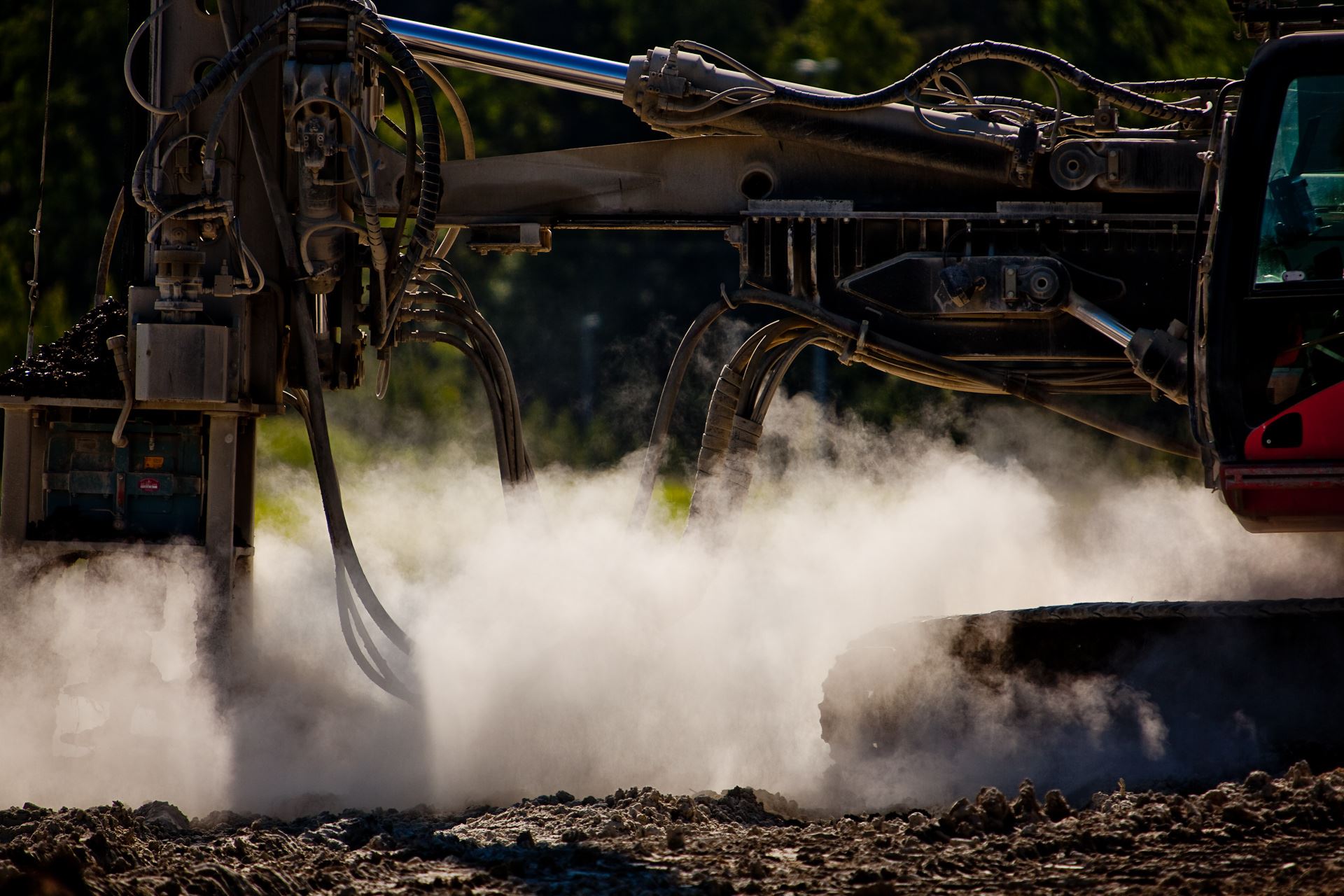The objective of the remediation was to eliminate the risks to people and the environment from the landfill. After the remediation, the former landfill site will house the central wastewater treatment plant for the Tampere region.
Stabilisation
By stabilisation, low-carrying soils are recovered to be utilized.
We have decades of experience in ground stabilisation, our own special equipment and extensive expertise in various stabilisation projects.
Our stabilisation fleet is the top of its class. All our stabilisation machines are fitted with a satellite positioning system and automated reporting system covering all the report data defined by the infraRYL guidelines.

Column stabilisation
Column stabilisation is a deep stabilisation method in which the soil is reinforced without removing any ground by adding a lime and cement-based binder to the soil. The drill of the stabilisation machine is driven to the desired depth, and when the drill is pulled up, the binder is driven into the ground while mixing simultaneously. The column structure is formed when the binder reacts with soil moisture.
Column stabilisation is an option for reducing the foundation costs compared to a foundation on piles, for example. Deep stabilisation is particularly suitable for the soil stabilisation of extensive project areas. It is quite competitive as a foundation reinforcement method.
We have long experience in deep stabilisation and we are pioneer users of the method. We have developed a mechanical stabilisation control system, and updated, reliable documentation and quality assurance form a central part of our service. Our stabilisation fleet is at the top of its class.
Mass stabilisation
In mass stabilisation, the ground is reinforced by adding a lime or cement-based binder to the soil mass. The binder is mixed with the soil using a mixer machine tip that is moved both vertically and horizontally in a lamellar manner. The binder reacts with soil moisture, creating slab-like, uniformly reinforced zones that can be used as the foundation of soil structures such as when building on load-bearing ground.
Mass stabilisation can be used instead of mass replacement, saving both money and time. Mass stabilisation is particularly suitable for the soil stabilisation of extensive project areas. It is quite competitive as a foundation reinforcement method.

Applications for stabilisation:
- Road, street and railway embankments and different kinds of yard and storage areas
- Stabilisation of clay, peat, sludge or silt
- Prevention of harmful sinking
- Improving the stability
- Improving the load-bearing capacity of ground
- Remediation of contaminated soil
Foundation engineering requires a broad set of skills
Thanks to YIT’s foundation engineering expertise, work on a site does not stop even if something unexpected is discovered under the topsoil.


